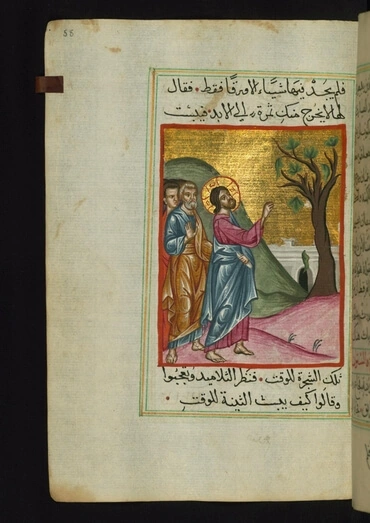
This story causes a certain amount of consternation for believers, and is a favorite of Bible critics. Why would Jesus, in all His perfection, curse a poor defenseless tree for the small crime of having no fruit – especially when, as the version of the story in Mark says, it is not even the season for figs? It seems downright mean-spirited.
The answer, of course, is that Jesus was offering a spiritual lesson through the internal meanings of the things He did: a lesson about the nature of the Jewish church at the time, the nature of the church He was creating, and the nature of the “churches” we should all be building inside ourselves.
This story occurs the morning after Jesus’ triumphal entry into Jerusalem and a day spent chasing the money-lenders from the Temple (according to Matthew and Luke, anyway), healing, preaching, and confronting the church elders. The Writings say that in general, cities in the Bible represent doctrinal systems, the ideas and principles that give a church form. In this case, being Jerusalem, the city represents the doctrine of the Jewish church of the day. So Jesus had been assessing the church’s doctrine, and had found it wanting.
After a night in Bethany – a higher, more spiritual state of preparation and rejuvenation – Jesus was again looking to the external state of the church: heading back to Jerusalem. The fact that He was hungry represents his desire to find some true goodness in the Jewish church, an element of love and caring.
But it was not to be, a fact He illustrated through the fig tree.
A fig tree, according to the Writings, represents a state of natural goodness, a desire to be good in external, day-to-day things. Leaves represents facts, thoughts, ideas, intellectual things attached to that desire for good. Fruit represents the actual good deeds, good things performed from that desire, fed through the leaves. The fig tree, then, represents the state of the Jewish church of the time. It was intended to help people be good in their actions, in their external lives. It still had the knowledge – the leaves – that connected to that intended state. But it had no fruit – there was no actual good coming from it.
By causing the tree to wither, Jesus was showing the state of ideas – even valid ones – that are not used for good purposes: They are rendered false and lifeless. What He did to the tree showed what He was doing to the Jewish church: exposing the hollowness of its external ideas to make way for the new church He was launching.
And what would the nature of the new church be? Casting a mountain into the sea represents uprooting our deepest evil – the love of ourselves – and casting it into hell. Receiving “all things” means letting the Lord into our deepest recesses to bring His order and peace. That’s what the new church would offer, and what the Lord still offers: If we will believe – if we will acknowledge the Lord as God and follow His teachings – we can shed not only our external evils (the fig tree) but also our internal ones (the mountain) and reach a state of true blessedness.
(References:
Apocalypse Explained 386 [29]; Arcana Coelestia 885 [2], 4314 [4]; The Apocalypse Explained 109 [6], 403 [21])







